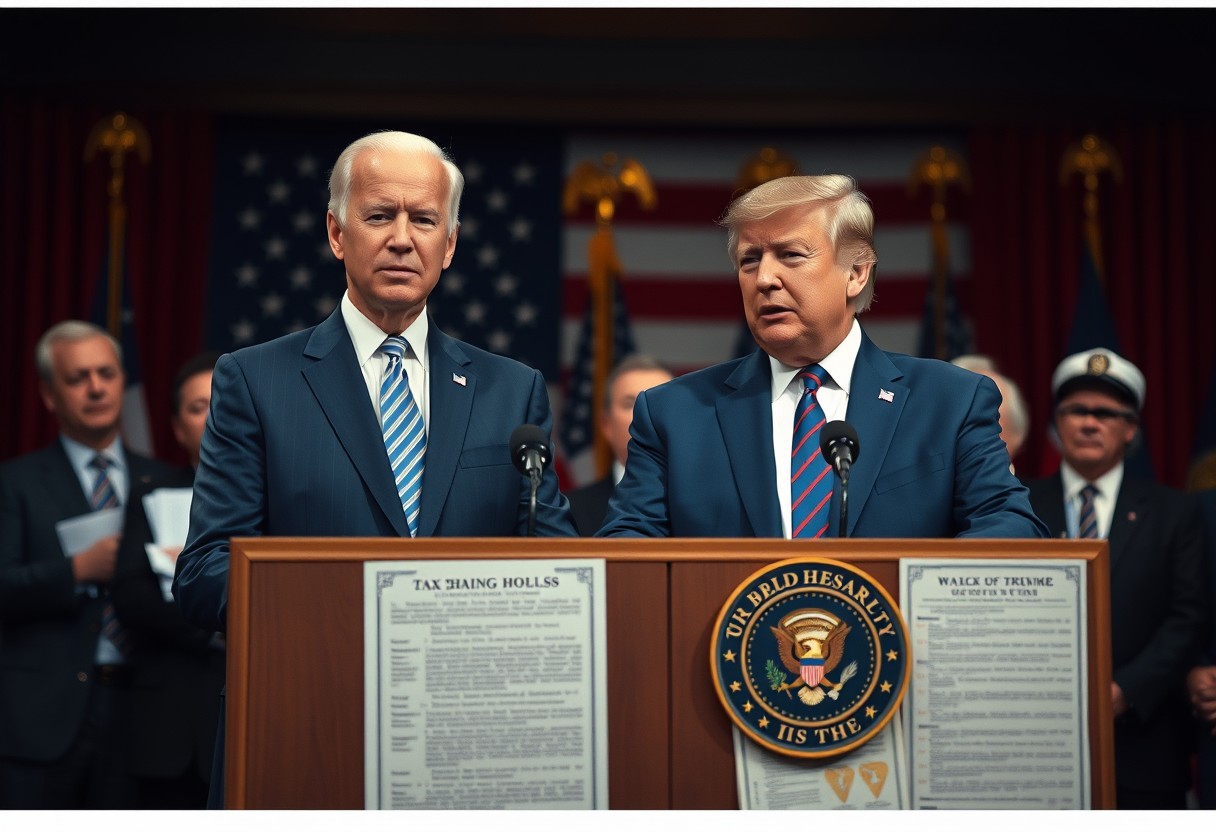FAQ
Q: What key elements distinguish Biden’s tax proposal from Trump’s?
A: Biden’s tax proposal emphasizes increasing taxes on wealthy individuals and corporations to fund social programs, while also advocating for reducing the tax burden on middle and lower-income families. In contrast, Trump’s tax policy primarily focused on tax cuts for corporations and wealthier individuals, promoting the idea that these cuts would stimulate economic growth through trickle-down economics.
Q: How do Biden’s tax proposals relate to previous administrations’ policies?
A: Biden’s proposals can be compared to the tax frameworks of previous Democratic administrations, such as those under Bill Clinton, where raised taxes on the wealthy helped to create budget surpluses. In contrast, Trump’s tax cuts mirror the approach taken during George W. Bush’s presidency, where significant tax reductions were implemented with the goal of promoting spending and investment.
Q: How have Biden’s tax proposals evolved in response to economic challenges?
A: Biden’s tax proposals have evolved to address the economic impacts of the COVID-19 pandemic, focusing on recovery measures and economic equity. This shift has led to calls for increased taxation on the wealthiest Americans to finance initiatives like infrastructure and healthcare, while earlier proposals by Biden were less aggressive on tax increases.
Q: What historical events have shaped the current tax discussions regarding Biden and Trump’s proposals?
A: Key historical events include the Great Recession of 2008, which prompted discussions on tax relief and recovery strategies, and the ongoing challenges posed by income inequality. The increasing public discourse surrounding wealth concentration has significantly influenced Biden’s push for progressive tax measures compared to Trump’s emphasis on tax reductions during a period of economic expansion.
Q: How do these tax proposals reflect societal attitudes towards taxation and government spending?
A: Biden’s proposals reflect a growing acceptance of the idea that wealthier individuals should contribute more to support social programs, mirroring a progressive shift among many voters. Conversely, Trump’s proposals were aligned with a more traditional view that advocates for lower taxes and limited government intervention in the economy, emphasizing personal freedom and private sector growth.
Q: What similar tax policy debates have occurred in American history?
A: Similar debates can be traced back to the Progressive Era, when reforms aimed at taxing the wealthy became prominent, and during the Great Depression, where increased taxation on the wealthy was seen as necessary for economic recovery. Each instance reflects the ongoing tension between taxation for social welfare and the desire for economic growth through tax reduction.
Q: How do Biden’s and Trump’s tax proposals address climate change and infrastructure spending?
A: Biden’s tax proposals incorporate measures aimed at addressing climate change, such as tax incentives for renewable energy and investments in green technology. Trump’s tax plan, while less focused on environmental issues, included some infrastructure spending provisions, but prioritized tax cuts overall. This divergence reflects a broader policy emphasis on sustainability in Biden’s agenda versus growth through deregulation in Trump’s approach.
















